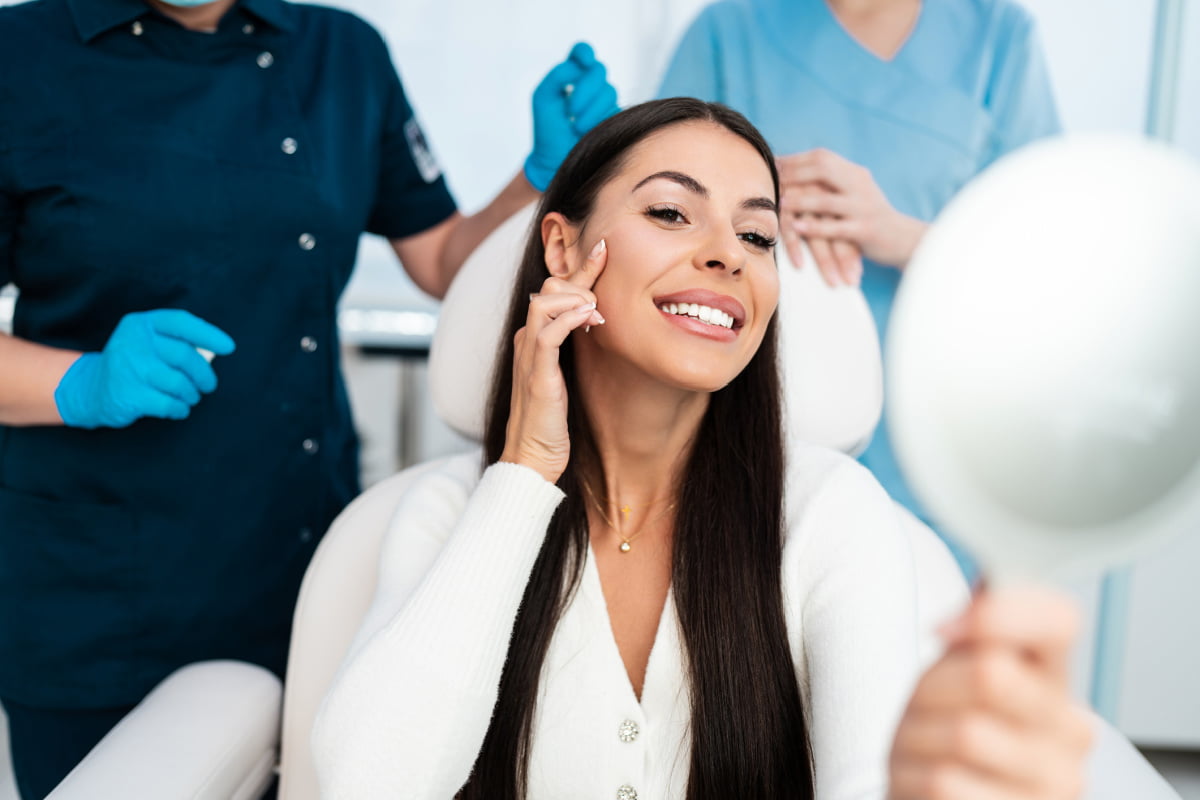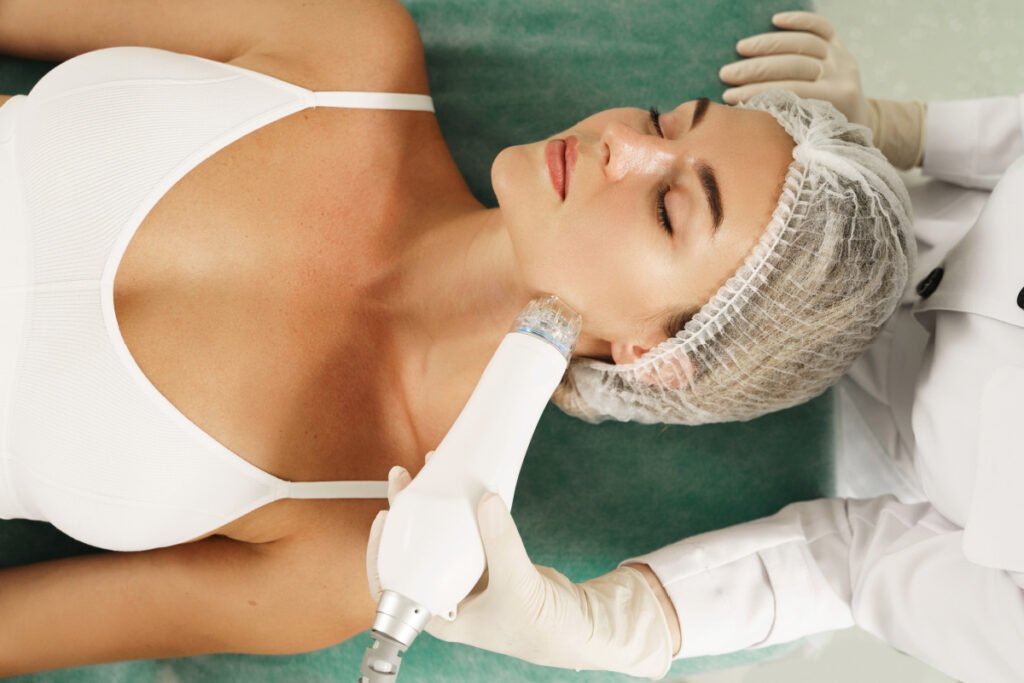Answering Your Top Vivace™ RF Microneedling Questions
Posted on October 11, 2024 | by Boston Plastic Surgery
Vivace combines traditional microneedling benefits with radiofrequency (RF) and LED therapy for a minimally invasive, non-surgical treatment to reduce signs of aging, tighten skin, and diminish the appearance of imperfections. Here, our team answers some frequently asked Vivace RF microneedling questions.
1. Where on the body can I get RF microneedling?
Vivace RF microneedling is FDA-cleared and patients can enjoy its rejuvenating effects on almost all parts of the body. The most common treatment areas for RF microneedling include the:
- Face
- Neck
- Chest
- Abdomen
- Inner thighs
- Hips
- Buttocks
- Knees
- Legs
In sum, RF microneedling treatment can address nearly any area that patients wish to see improvement in skin tone, texture, and overall appearance.
2. How is Vivace different from other RF microneedling devices?
Vivace RF microneedling achieves greater skin improvements and more quickly delivers results when compared to other RF microneedling options. This is thanks to the inclusion of LED therapy, which:
- Calms redness and inflammation
- Neutralizes bacteria that can lead to acne breakouts
- Boosts collagen production, amplifying skin rejuvenation
- Speeds healing, reducing the post-treatment “sunburn” effect
Vivace RF microneedling achieves greater skin improvements and more quickly delivers results when compared to other RF microneedling options.
3. Who can safely get RF microneedling? Does my skin tone matter?
Numerous studies show that RF microneedling is safe and effective for non-surgical skin rejuvenation for most patients in general good health.
Plus, Vivace can benefit almost all skin types and tones—from light to dark. When correctly positioned, the handheld needle-tipped device delivers heat (RF energy) deep within the tissue, without triggering the layer of melanin-producing cells that can lead to postinflammatory hyperpigmentation in patients with darker skin tones. This makes Vivace a safe skin rejuvenation option for more melanated complexions.
In sum, contraindications for RF microneedling are limited, but treatment should be delayed for patients who:
- Have acne or active skin infections
- Take Accutane (or have recently)
- Have moderate to severe chronic skin diseases (eczema or psoriasis)
- Have a compromised immune system
- Are undergoing chemotherapy or radiation
Additionally, if you have received Botox-type injections, let your provider know so your treatment can be adjusted to avoid unwanted diffusion of the product at the injection site.
4. Does RF microneedling hurt?
Vivace RF microneedling causes minimal discomfort, with many patients reporting no pain at all. A topical numbing cream is applied 30-45 minutes before treatment begins to ensure you remain comfortable throughout your treatment, so you’ll likely just feel a light pressure as the device moves over your skin.
Vivace RF microneedling results will improve for approximately 6 months following treatment as boosts in collagen and elastin remodel your skin from below.
5. What are the side effects of RF microneedling?
Side effects of RF microneedling are temporary and easily tolerated, and may include redness, swelling, and mild skin flaking. While these effects are akin to a mild sunburn and can be concealed with makeup, be sure to discuss timing with your provider and schedule treatment at least a few weeks ahead of any important occasion.
6. Can I get microneedling with RF if I am pregnant? Is it safe to have RF microneedling while breastfeeding?
While RF microneedling treatments use wavelengths that are too short to reach an unborn baby, because the effects of RF microneedling during pregnancy and while breastfeeding have not been sufficiently studied, it is safest to delay treatment until after your baby has made their debut and you are no longer breastfeeding.
Additionally, receiving RF microneedling treatments can trigger or worsen melasma (hyperpigmentation) in expectant and nursing mothers due to increased hormone levels during pregnancy and breastfeeding that make the skin more sensitive to light and heat.
Lastly, the topical anesthetic used on the treatment area is absorbed by your skin and may have the potential to present in low levels in breastmilk. The differing opinions in the medical community on whether or not this is a risk worth taking indicates it is best to wait until more research citing safety is available.
7. What other treatments or procedures combine well with RF microneedling?
Depending on your skin rejuvenation goals, combining other treatment modalities may help you achieve quicker, more noticeable improvements. Some complementary treatments and procedures for Vivace RF microneedling include:
- CoolPeel laser resurfacing reveals more radiant skin and diminishes signs of aging by creating microscopic openings in your skin—prompting a boost in collagen production with no pain or downtime. CoolPeel + Vivace RF microneedling amplifies skin rejuvenation results with no downtime.
- Chemical Peels brighten and smooth your skin using specialized chemical exfoliants to gently remove the dull, dead skin cells from the skin’s surface. Combining Vivace RF microneedling with a chemical peel achieves visibly greater results on the surface of the skin while collagen remodels your skin below the surface.
- Sofwave uses ultrasound technology to stimulate collagen production to reduce signs of aging and non-surgically lifts the skin on the face and neck. Using Sofwave and Vivace RF microneedling together will achieve more complete anti-aging results.
- Medical-grade skincare products are more effective than drugstore brands because they contain greater concentrations of active ingredients. For some time following microneedling treatment, skincare products may achieve deeper skin penetration, conferring greater benefits. A good skincare program will also extend the longevity of your results.
8. What is RF microneedling recovery and aftercare like?
You may return to your normal activities immediately after Vivace RF microneedling treatment—though we recommend avoiding rigorous exercise for the rest of the day so your skin doesn’t become overheated. Many patients are ready for a night out with little to no evidence they had a skin treatment that day—but we will ask you to wait at least 6 hours after treatment to apply makeup.
To speed healing and encourage optimal results, you should carefully follow all aftercare instructions, including avoiding sun exposure for 3-5 days and applying sun protection of SPF30 or greater when going outside. You may notice mild skin flaking but you must resist the urge to pick at or scrub your skin. This is a normal part of recovery and the flaking will resolve on its own within a few days.
You may resume your normal skincare routine about 1 week after treatment. If you use products that increase skin sensitivity, such as retinols, exfoliants, and hydroxy and salicylic acids, wait an additional week before gradually incorporating those products back into your routine.
9. What should I look for when choosing a RF microneedling provider?
Make sure your provider is an official Vivace RF microneedling provider. This ensures that your provider has received the proper training to safely operate the device and can customize your treatment to achieve optimal results.
Schedule your Vivace RF Microneedling consultation at Boston Plastic Surgery
Boston Plastic Surgery, led by board certified plastic surgeon Dr. Fouad Samaha, proudly serves Quincy, Boston, MA and the surrounding areas. To learn more about safe and effective RF microneedling, or other non-surgical skin rejuvenation options, we invite you to schedule a consultation by calling our practice at (617) 786-7600 or contact us online.

